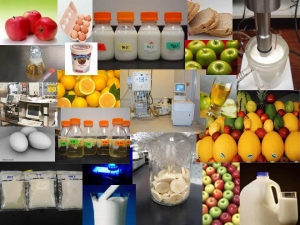The processes of Upstream and downstream are important in the Food Processing industry in India. The upstream and downstream requirements of food processing industry are explained in brief here for the benefit of UPSC aspirants who have various aspects of this covered in the General Studies III syllabus.
Let us first understand the basic meaning of upstream and downstream in a commercial setting. The suppliers of a producer or trader are considered to be a part of the upstream side, whereas the customers are part of the downstream side. The entity which is considered upstream and downstream keeps on changing based upon the position of the entity under observation. Take an example, for a farmer, the supplier of seeds and fertilizers lie on the upstream side, while the cold storage owners, farm contractors, mill owners and traders of his produce lie on the downstream side.
Now what is integration between upstream and downstream? Integration is when a particular entity assumes two or more roles in a supply chain. For instance, a Chips manufacturer instead of obtaining potatoes from farmers, begins to procure them from its own farms. This type of integration in the supply chain will be called Backward integration.
This can also be reversed. If a farmer sets up a processing plant for manufacturing chips from his potatoes rather than selling it to the downstream entity, it will be termed a forward integration. Therefore, even Direct farming is a form of Forward integration whereby the farmer also assumes the role of agent who sells the produce at a commission.

The forward and backward integration, is also known as ‘vertical integration’. Vertical integration is a common occurrence in any business as it saves the costs associated with the supply chain. Hence, the business which pursue an integration strategy, acquire a competitive edge.
Take the example of Reliance Industries which owns oil and exploration business, has refining business, operates retail outlets for these products, and alongside it is also India’s biggest polyester manufacturer. This shows the extent of vertical integration in their business which has also allowed them to enjoy a sort of monopoly in these sectors consequently.
In order to have efficiency and more profit from a business dealing with perishables like the food processing industry, it is important to have the primary requirements of downstream as well as upstream fulfilled. Some of them are required to be facilitated by the state while others can be adopted by best practices in the industry. this will reduce wastage as well as ensure increased profits.
<<Read about the Highlights of Union Budget here>>
Food Processing Upstream and Downstream requirements :
Firstly, let us sum up the basic requirements of Upstream in Food processing industry:
- Accessibility to raw materials is the first upstream requirement for any industry.
- The food processing industry also requires modern extraction techniques.
- To make the food processing industry sustainable, it is important to ensure good linkages with farmers.
- The storage facilities for raw materials like Grains, Meat, Fish etc. are important part of food processing upstream requirements.
- Food processing industry also requires good quality testing facilities.
- Transport facilities are essential part of upstream requirements of food processing industry in India.
- The food industry also requires a sizable amount of work force.
Let us look at basic requirements of Downstream in Food processing industry:
The downstream stage in the production process involves processing of the materials collected during the upstream stage into a finished product. The downstream stage also includes the actual sale of product to customers like businesses, governments or individuals. Since, downstream processing has direct contact with customers through the finished product, it requires a large work force.




